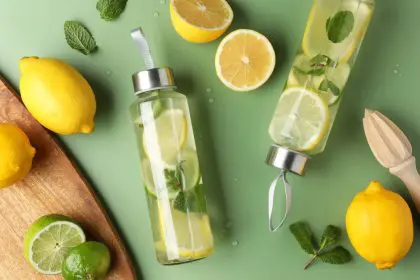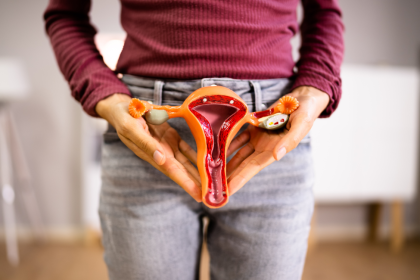That jar of dried herbs sitting in your kitchen cabinet might be holding back its full potential. While sprinkling dried basil into your pasta sauce or steeping chamomile for tea seems straightforward enough, there’s a simple step that could dramatically transform how these plants work in your body. Soaking herbs before using them isn’t just an extra step for the wellness-obsessed. It’s a practice rooted in centuries of traditional medicine that modern science is finally catching up to.
What happens when herbs meet water
When you drop dried herbs into water, you’re initiating a complex dance of chemistry that begins the moment the first molecule of moisture touches the plant material. Dried herbs are essentially dormant powerhouses, their cell walls contracted and their compounds concentrated through the drying process.
Water acts as both awakener and extractor. As herbs absorb moisture, their cellular structures begin to soften and expand. This rehydration process allows the plant’s cell walls to become permeable again, creating pathways for the beneficial compounds inside to migrate outward into the surrounding liquid.
The transformation is profound but largely invisible to the naked eye. Beyond the obvious visual changes of the herb expanding and the water taking on color, there’s a migration of flavor compounds, antioxidants, vitamins, minerals, and medicinal constituents from plant to water.
Temperature plays a crucial role too. Cold water extracts different compounds than hot water. Cold water soaking tends to preserve delicate aromatic compounds and prevent the breakdown of heat-sensitive constituents like certain vitamins and volatile oils. Hot water, on the other hand, speeds up the extraction process and can release deeper-seated compounds like resins and some alkaloids that might remain locked away in a cold-water soak.
Timing matters as well. A quick five-minute soak initiates the process but leaves many beneficial compounds behind. Extended soaking, from hours to overnight, allows for maximum migration of water-soluble constituents from the plant material into the liquid.
How soaking transforms medicinal properties
The shift in medicinal potency when herbs are soaked isn’t just noticeable. It can be dramatic. Many of the most valuable compounds in medicinal herbs are locked within cellular structures that our digestive systems struggle to break down efficiently, especially when the herbs are consumed dry.
Take turmeric as an example. Its primary beneficial compound, curcumin, is notoriously difficult for the body to absorb. When dry turmeric powder is simply consumed, much of its potential benefit passes through the body unused. But when soaked, especially with a pinch of black pepper, the curcumin becomes significantly more bioavailable, meaning your body can actually access and use its anti-inflammatory properties.
Soaking herbs can also activate certain enzymes within the plants that convert inactive compounds into their active forms. Allicin, the heart-healthy compound in garlic, isn’t actually present in intact garlic cloves. It forms only when the cells are damaged and two precursor compounds come together, a process that soaking can enhance.
For herbs containing beneficial tannins, like raspberry leaf or oak bark, soaking can actually reduce their astringency while maintaining their therapeutic effects. This makes these herbs gentler on the digestive system while still providing their strengthening and toning benefits to tissues.
Even more fascinating is how soaking can transform potentially harmful compounds in some herbs into beneficial ones. Certain alkaloids that might cause digestive upset in their raw form can be modified through the soaking process into more tolerable compounds.
The bioavailability breakthrough
Perhaps the most significant benefit of soaking herbs is how it affects bioavailability, or how easily your body can absorb and use the medicinal compounds. Dried herbs consumed directly, whether swallowed in capsules or sprinkled into food, present our digestive systems with a challenge. The compounds must be liberated from tough plant cell walls and then absorbed through the intestinal lining, all within the limited time the herb spends in our digestive tract.
Soaking essentially does much of this work before the herb ever enters your body. The water acts as a preliminary digestive system, extracting compounds and making them immediately available for absorption when consumed. This is why herbal teas and tinctures often work more quickly and effectively than the same herbs taken in capsule form.
This pre-digestion process is particularly important for people with compromised digestive function. Those with low stomach acid, insufficient digestive enzymes, or inflammatory gut conditions often cannot break down plant material efficiently enough to access the medicinal compounds inside. For these individuals, the difference between consuming dried versus soaked herbs can be the difference between experiencing full therapeutic effects or none at all.
Water-based preparations also allow the body to absorb water-soluble vitamins like B and C that might otherwise pass through the digestive system unabsorbed when taken in dry form. Since these vitamins are crucial for energy production, immune function, and nervous system health, optimizing their absorption can make a significant difference in how you feel.
Different soaking methods for maximum benefits
Not all soaking methods yield the same results, and traditional herbal systems around the world have developed specific techniques for different healing goals.
Cold infusions involve soaking herbs in room temperature or cold water for extended periods, usually 4-12 hours. This gentle extraction is ideal for delicate herbs rich in volatile oils, like mint and lemon balm, and for mucilaginous herbs that form a healing slippery substance when soaked, such as marshmallow root and slippery elm. Cold infusions preserve heat-sensitive vitamins and subtler flavors that might be damaged by heat.
Hot infusions, commonly known as herbal teas, use boiling water poured over herbs followed by a steeping period. This method works well for leaf and flower herbs where you want to extract a broad spectrum of compounds quickly. The heat helps break down cell walls and release constituents like flavonoids that benefit from higher temperatures.
Decoctions take a more intense approach, actually simmering tougher plant parts like roots, bark, and seeds in water for 20-60 minutes. This extended heat exposure is necessary to break down dense cellular structures and extract deep-seated medicinal compounds. Herbs like burdock root, dandelion root, and astragalus benefit from this method.
Solar infusions harness the sun’s energy, allowing herbs to slowly extract in water placed in direct sunlight for several hours. This method is particularly valued in some traditional systems for infusing the solar energy into the medicine itself, believed to enhance the preparation’s life-giving properties.
For maximum extraction of both water-soluble and alcohol-soluble compounds, some herbalists use a dual extraction process. This involves first soaking herbs in alcohol to extract resins, alkaloids, and certain medicinal compounds, then in water to capture the remaining water-soluble constituents, before combining both extracts.
The wisdom in ancient practices
Traditional medicine systems worldwide have long understood the importance of proper preparation. Chinese medicine rarely prescribes raw herbs, instead emphasizing elaborate cooking methods to transform the herbs’ properties. Ayurvedic medicine from India frequently incorporates herbs into water-based preparations like kashayam, where specific boiling procedures are followed precisely to enhance certain medicinal aspects of the herbs.
European folk herbalism developed its own soaking wisdom, with detailed instructions passed down through generations about which herbs should be steeped briefly in boiled water, which should be slowly simmered, and which should be left to extract overnight in cold water.
These traditions weren’t based on understanding molecular structures or biochemical pathways. They were developed through centuries of careful observation and experience, noting which preparation methods yielded the best results for specific health conditions.
Modern laboratory analysis has since validated many of these traditional practices, finding that the recommended preparation methods do indeed optimize the extraction of the compounds most beneficial for the conditions these herbs were traditionally used to treat.
By reconnecting with these preparation methods, we’re not just accessing the physical benefits of properly prepared herbs. We’re also tapping into an ancestral wisdom about how humans can best relate to and receive healing from the plant world.
The simple act of soaking herbs might seem inconsequential in our rush for immediate results. But in that patient process of allowing water to unlock the healing potential of plants, we participate in one of humanity’s oldest healing traditions, one drop at a time.















